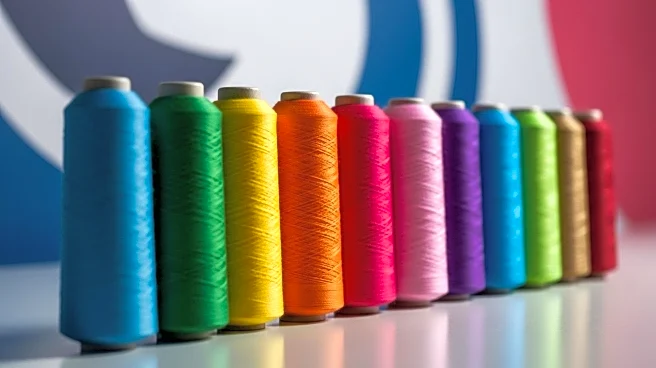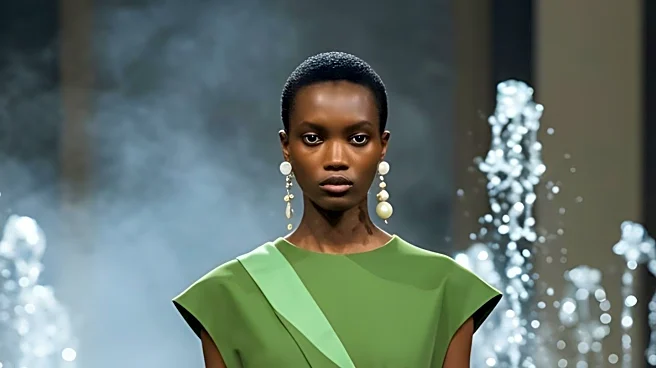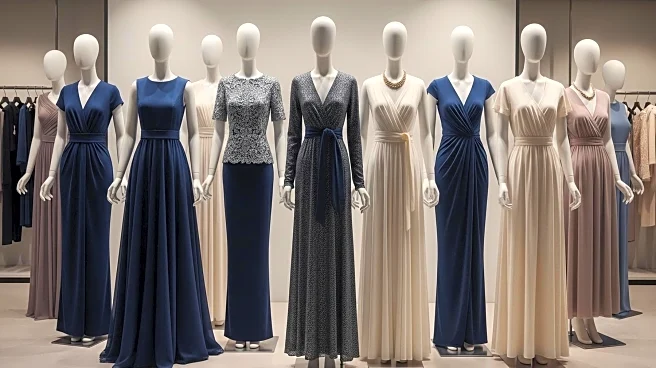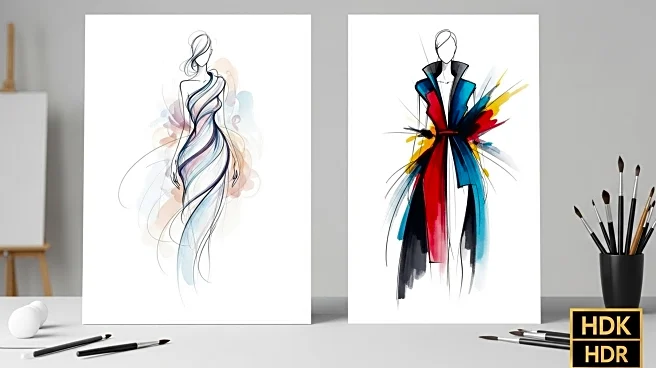What's Happening?
H&M has made a notable return to London Fashion Week after a seven-year hiatus, showcasing its latest collection in a vibrant outdoor runway event at 180 Strand. The show featured performances by pop star Lola Young and appearances by top models such as Alex Consani and Mona Tougaard. This event marks a significant step in H&M's ongoing strategy to rejuvenate its brand image and boost sales. The company has been struggling to find its niche in a market dominated by ultra-fast fashion brands like Shein and premium competitors like Zara. Under the leadership of CEO Daniel Ervér, H&M is focusing on enhancing its fashion credibility and improving the shopping experience to regain market share.
Why It's Important?
H&M's return to London Fashion Week is a critical move in its broader strategy to revitalize its brand and improve financial performance. The fashion industry is highly competitive, with fast-fashion and premium brands vying for consumer attention. H&M's efforts to reposition itself could influence its market standing and financial health. Success in this endeavor could lead to increased sales and profitability, benefiting stakeholders and investors. However, failure to effectively execute this strategy may result in continued financial challenges and loss of market relevance.
What's Next?
H&M plans to continue its strategic initiatives, focusing on product quality and market positioning. The company aims to create 'heat' around its brand through innovative marketing and fashion-forward collections. Future steps include expanding its product offerings and enhancing customer engagement. The success of these efforts will be closely monitored by industry analysts and investors, as they will determine H&M's ability to compete effectively in the evolving fashion landscape.
Beyond the Headlines
H&M's strategic shift highlights the broader challenges faced by traditional fashion retailers in adapting to changing consumer preferences and market dynamics. The emphasis on fashion credibility and quality reflects a potential shift towards more sustainable and thoughtful consumption patterns. This development could have long-term implications for the fashion industry, influencing trends and consumer behavior.










